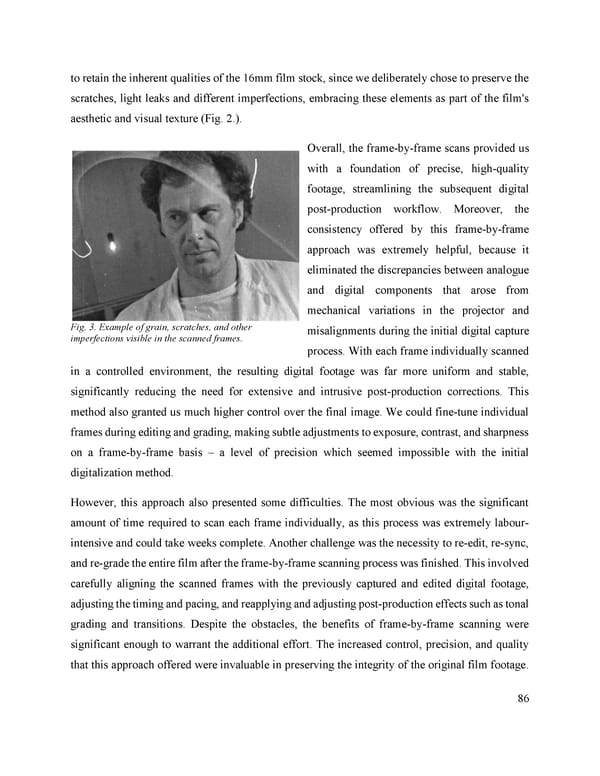to retain the inherent qualities of the 16mm film stock, since we deliberately chose to preserve the scratches, light leaks and different imperfections, embracing these elements as part of the film's aesthetic and visual texture (Fig. 2.). Overall, the frame-by-frame scans provided us with a foundation of precise, high-quality footage, streamlining the subsequent digital post-production workflow. Moreover, the consistency offered by this frame-by-frame approach was extremely helpful, because it eliminated the discrepancies between analogue and digital components that arose from mechanical variations in the projector and Fig. 3. Example of grain, scratches, and other misalignments during the initial digital capture imperfections visible in the scanned frames. process. With each frame individually scanned in a controlled environment, the resulting digital footage was far more uniform and stable, significantly reducing the need for extensive and intrusive post-production corrections. This method also granted us much higher control over the final image. We could fine-tune individual frames during editing and grading, making subtle adjustments to exposure, contrast, and sharpness on a frame-by-frame basis – a level of precision which seemed impossible with the initial digitalization method. However, this approach also presented some difficulties. The most obvious was the significant amount of time required to scan each frame individually, as this process was extremely labour- intensive and could take weeks complete. Another challenge was the necessity to re-edit, re-sync, and re-grade the entire film after the frame-by-frame scanning process was finished. This involved carefully aligning the scanned frames with the previously captured and edited digital footage, adjusting the timing and pacing, and reapplying and adjusting post-production effects such as tonal grading and transitions. Despite the obstacles, the benefits of frame-by-frame scanning were significant enough to warrant the additional effort. The increased control, precision, and quality that this approach offered were invaluable in preserving the integrity of the original film footage. 86
 Lost Analogue: Exploring Film, Music, and Interdisciplinary Methods in Education Page 86 Page 88
Lost Analogue: Exploring Film, Music, and Interdisciplinary Methods in Education Page 86 Page 88